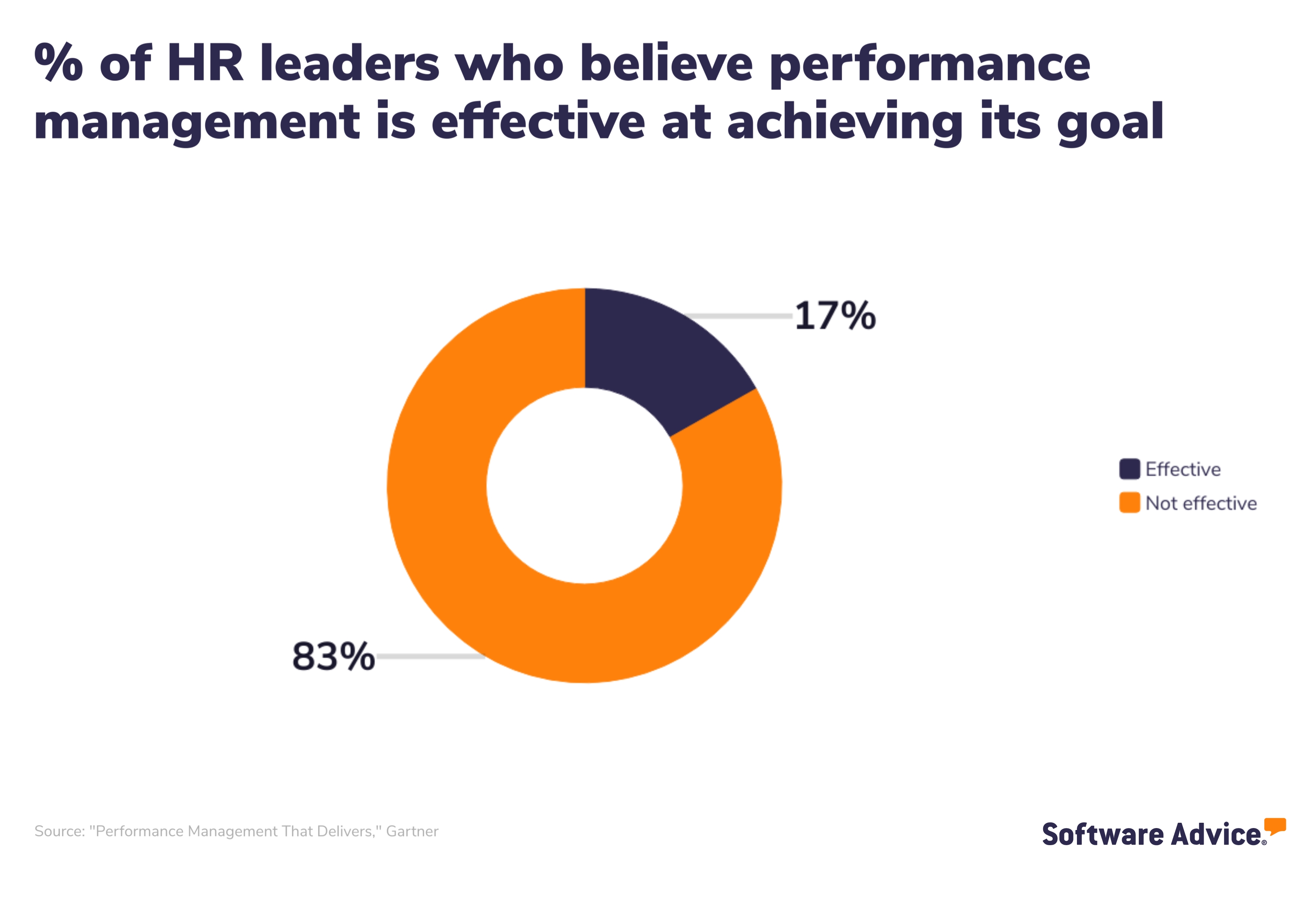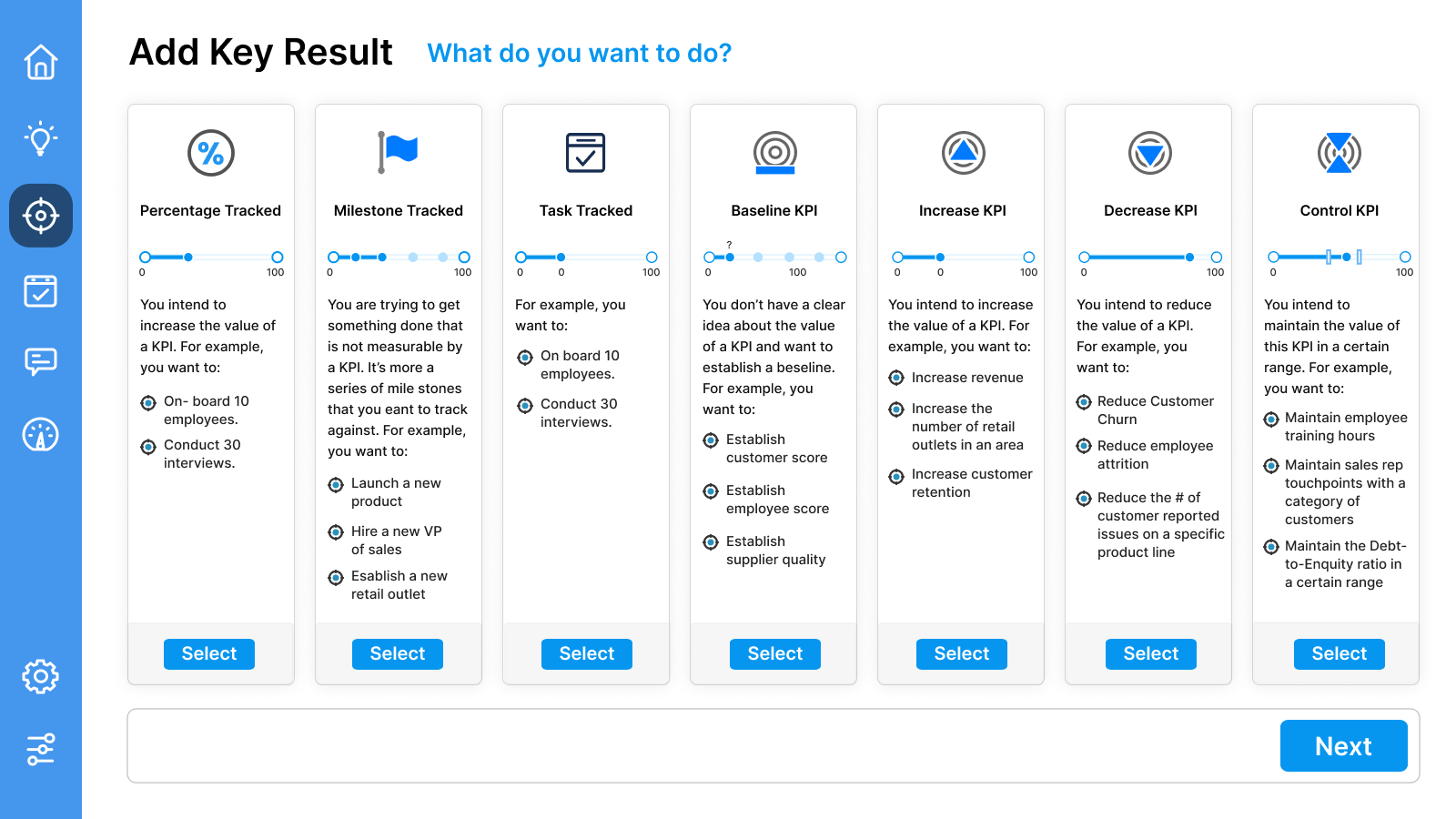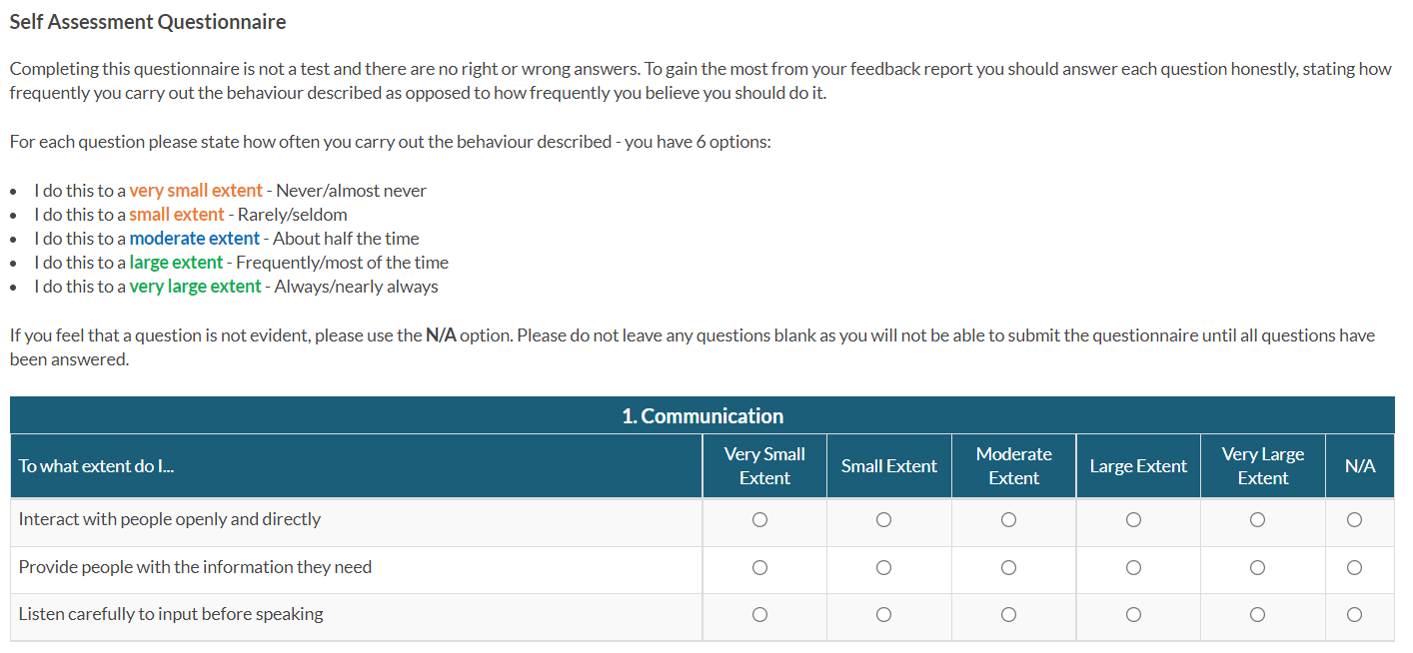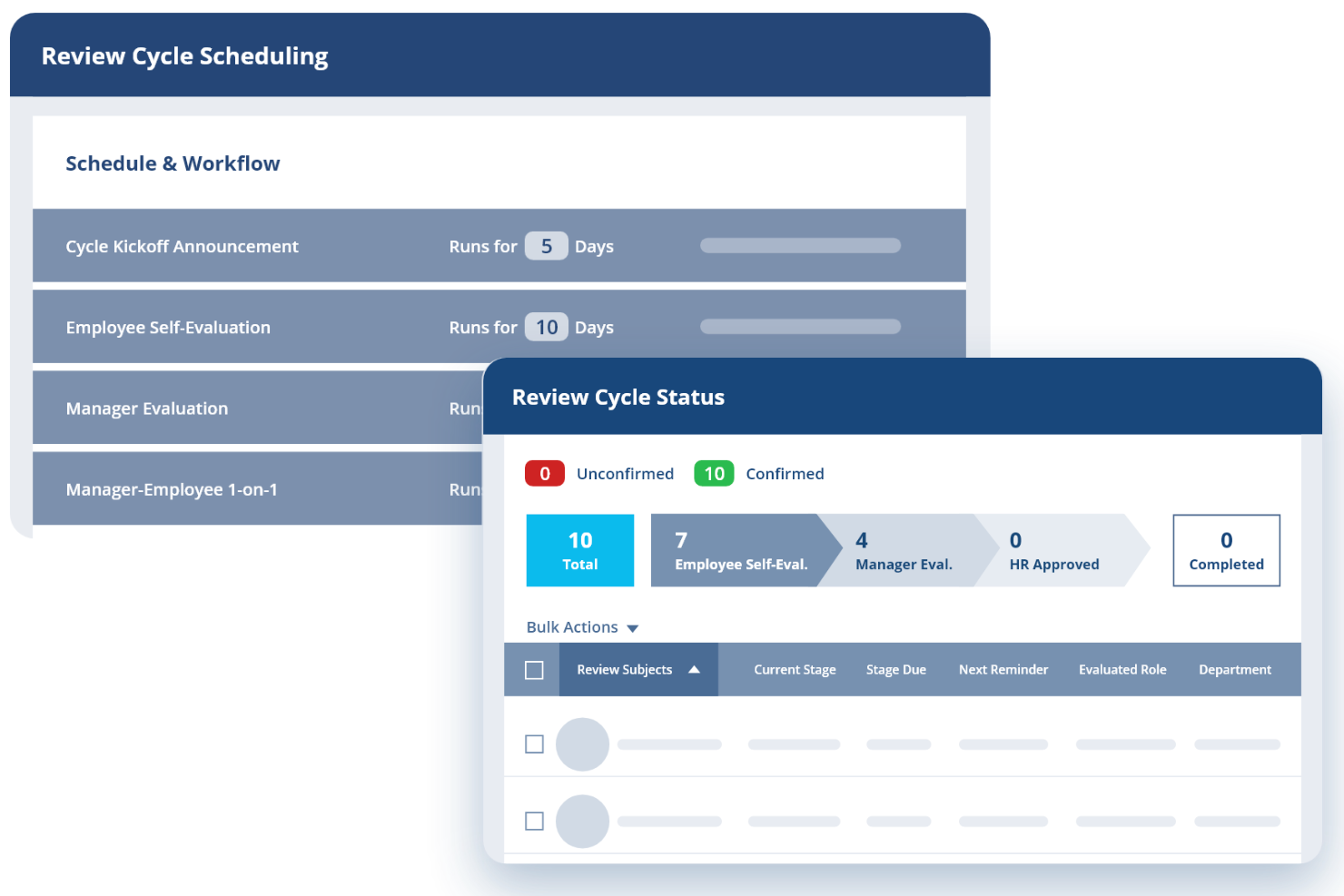Performance Management vs Performance Appraisal: What's The Difference?
HR leaders: If you feel like your current performance management strategy is ineffective at achieving its objectives, you're in good company.

Only just over a third (38%) of HR leaders agree that performance management keeps pace with business needs. This is concerning because when performance management does have high utility it can lead to a 24% increase in workforce performance. [1]
Meaning, if you're motivated to improve your current strategy so that it has a positive impact on business goals, it's time to re-evaluate your options, starting with whether you need to conduct performance appraisals, try a new performance management approach, or both.
In an effort to help you determine what the next step in performance management is for your small to midsize business (SMB), we dug deep into Gartner research and organized everything you need to know about these two strategies below.
What's the difference between performance management and performance appraisals?
The primary difference between performance management and performance appraisal is that the former evaluates employees as a whole, whereas the latter focuses on individual job performance. As a matter of fact, performance appraisals are technically a type of performance management.
Many organizations opt to use both performance management and performance appraisals to ensure they're tracking toward company goals.
Performance management | Performance appraisals | |
|---|---|---|
Definition | Performance management is a combination of methodologies and metrics that enables managers to define, monitor, and optimize team outcomes necessary to achieve organizational goals and objectives | Performance appraisal is the process by which organizations collect information about how well an employee is doing their job |
Nature | Flexible | Structured |
Frequency | Ongoing | Bi-annually or annually |
Owned by | Team managers | HR |
Purview | Present and future performance | Immediate past performance |
Focused on | Qualitative information | Quantitative and qualitative information |
Purpose | Further organizational goals | Improve employee performance and determine compensation/bonuses |
The basics of performance management
Performance management is an ongoing process that involves a supervisor and their direct reports. The primary purpose of performance management is to influence performance so that it has a positive impact on organizational priorities, whether you want to increase sales, future-proof your workforce, or expand your business offerings. This means that in order for performance management to be effective, company goals must be defined first.
Learn how to align employee performance with organizational goals: Future-Proof Your Workforce With Talent Mapping
2 ways to measure performance management
1. Behavior-based evaluation
Behavior-based performance evaluations consider specific examples of employees' behavior at work. Compared to other performance management strategies such as outcome-based evaluations (covered below), this technique is more objective—and therefore, susceptible to bias.
For instance, less than a third (29%) of organizations give managers examples of behaviors at each performance level. [2] Meaning, most managers do not have a framework for evaluating team members' behavior.
Still, behavior-based performance evaluations can be useful when it comes to measuring soft skills like collaboration, teamwork, and innovation.
When behavior-based evaluations work: Behavior-based evaluations work well when they're used in combination with outcome-based evaluations. The majority of organizations know this, with 91% opting to evaluate both employee outcomes and behaviors. [2]
Further, it makes sense to focus on evaluating behaviors for on-site employees more than remote or hybrid workers, simply because it's easier for managers to observe them. In fact, fewer hybrid employees and remote employees would prefer a greater emphasis on behaviors than outcomes (22% and 25%, respectively) than on-site employees (27%). [3]
Lastly, behaviors should be evaluated throughout the year rather than during a consolidated time period. Managers should take advantage of check-ins throughout the year to discuss behaviors so they become an integral part of performance management year-round and avoid being an end-of-year afterthought.
2. Outcome-based evaluation
Outcome-based performance evaluations look at the results of an employees' work efforts rather than the execution. For that reason, identifying relevant KPIs (key performance indicators) or OKRs (objectives and key results) that employees will be evaluated on is a must for this kind of performance management strategy to work. Fortunately, many performance management platforms are built to help you do this.

Managing a key result in Profit.co’s platform, a performance management solution (Source)
To put it into context, behavior-based evaluations consider the "how," while outcome-based evaluations focus on the "what." For example, a manager evaluating a sales associate based on the outcome of their work might look at the number of conversions they made or their win rate. Alternatively, if they were evaluating the sales associate's behavior, they might consider how they handle communicating with challenging clients.
When outcome-based evaluations work: Outcome-based evaluations are essential for hybrid and remote workforces. In fact, 33% of hybrid employees and 27% of remote employees prefer to have greater emphasis on outcome-based parameters than behavior-based ones for evaluating performance, compared to just 26% of on-site employees. [3]
Additionally, for managers to truly make outcome-based evaluations work, they need to measure employee performance with parameters that reflect business impact, not simply fulfillment of job accountabilities.
The basics of performance appraisals
Performance appraisals are a type of formal evaluation given to employees by either a manager or HR. Appraisals may take place annually or biannually, depending on the organization's policies. The results of performance appraisals may impact employees' compensation or career advancement opportunities.
There are two key aspects of performance appraisals: First, they require a ranking or rating system to evaluate employees upon, and second, the results are communicated through feedback or a review process.
4 common performance appraisal strategies
1. Self-assessment
Performance appraisals are built on input from various sources, including self-assessments or reviews. Self-assessments are usually facilitated with the help of a 360-degree feedback tool. Typically, employees are presented with a list of core responsibilities related to their role and will rate their performance and leave comments for each line item.
In 2022, 42% of hybrid workers and 46% of remote workers completed self-reviews, compared to just 33% of on-site workers. [3]

An example of a self-assessment in Lumus, a 360-degree feedback platform (Source)
While self-assessments are great for capturing the perspective of the employee who's being evaluated, there's always a risk of bias. For the best results, always consider the results of peer assessments in addition to self-assessments.
2. Peer assessment
Peer assessments are one of the most essential sources of input for performance appraisals, but this is especially true in remote or hybrid environments where team managers don’t have as much oversight.
Peer reviews capture the perspective of the people an employee works with on a regular basis. This means that employees get more feedback than they would if only their manager reviewed them, and also that their performance and behavior are represented more holistically.
In order to get the most truthful feedback from employees, peer assessments should be anonymous. They should also have a framework that peers can use to base their assessment on, such as a numerical scale or prompts tied to specific soft and hard skills.

A performance management tool called Peoplebox prompts a user to submit reviews for themselves, their manager, and a peer (Source)
3. 360-degree feedback assessment
As mentioned previously, 360-degree feedback tools can be used to facilitate self- and peer- assessments.
However, a true 360-degree feedback process is considered its own kind of performance appraisal strategy, because organizations that use this approach typically don't need to pair it with many other systems or strategies (if any at all).
This is because 360-degree feedback considers the perspective of every individual within a work ecosystem. Employees review themselves and also receive evaluations from their manager, team members, cross-functional peers, and direct reports. Feedback is typically kept confidential and anonymous, with the caveat that the individual being evaluated will know who was given a chance to provide their feedback.

An overview of the 360-degree feedback process as facilitated by ClearCompany (Source)
Only 33% of organizations involve employees' peers in performance evaluation, and just 25% involve teams. This is a problem considering that most (69%) HR leaders believe hybrid work has decreased managers' visibility into employee work patterns. [4] Adopting a 360-degree feedback process helps provide managers with the insights they need to truly understand how their team members are performing beyond what the metrics say.
4. Negotiated appraisal
Negotiated performance appraisals are driven by the employee and often involve a mediator (such as an HR professional) to act as a neutral party. They're most useful in situations where an employee is consistently underperforming or there’s a conflict between the employee and their supervisor or manager.
On the topic of workplace conflict: A 5-Step Guide to Conflict Resolution at the Workplace
Here's a rough overview of how negotiated appraisals work:
First, a framework for the evaluation is decided upon. The employee may be prompted to reflect on how they contributed to different key projects over the past six months to a year. Or, they might contemplate their performance in three areas: 1) where they perform well and contribute to the organization, 2) where they have shown recent improvement, and 3) where they still need to improve.
Once a framework is set, both the employee and their supervisor spend time reflecting and recording their evaluation. Then, the subject of the appraisal (the employee) will meet with their supervisor and present the results of their reflections (note: It is very important in a negotiated appraisal that the employee presents their findings first). The supervisor will respond by actively listening to the employee and presenting any thoughts they have that were not covered by the employee.
Lastly, the supervisor and the employee will finish the appraisal by agreeing on a list of things the employee can do to improve their work performance. This should be done via a formal record kept by the mediator and shared with those participating. Finally, there should be a follow-up meeting down the road to determine how the employee’s performance is progressing.
Which does your business need: performance management or performance appraisal?
For the most part, the answer is both because performance appraisals are a part of an effective performance management strategy. And when performance management is effective it can lead to a 14% increase in engagement, a 24% increase in workforce performance, and a 50% increase in the percentage of employees who think performance management is fair and accurate. [1]
When it comes to determining which specific performance management and performance appraisal tactics would work best at your organization, the following questions will help guide you in the right direction:
Is your workforce remote or hybrid? If so, you should evaluate employee performance based on the outcome of their work rather than their behavior. Additionally, you should include the perspectives of employees' peers in their evaluations because managers have less transparency into how their team members interact and collaborate with others.
Are skills development opportunities important to your workforce? If so, a comprehensive, ongoing performance management strategy is essential as it focuses on continuous development.
What kind of performance management software is at your disposal? If you have a 360-degree feedback platform, conducting performance appraisals should be a straightforward process that’s even automated to some extent. Alternatively, if you have performance management software, you likely have features at your disposal (such as goal tracking, employee engagement surveys, and benchmarking reports) that are built to support an ongoing performance management process beyond just collecting feedback.
Next, get in touch with a Software Advice advisor to learn more about the tools that can help you level up your organization's performance management. Our advisors are available to answer your questions and provide software recommendations tailored to your industry and budget—all for free.
Or, check out our related content:
Note: The applications selected in this article are examples to show a feature in context and are not intended as endorsements or recommendations. They have been obtained from sources believed to be reliable at the time of publication.